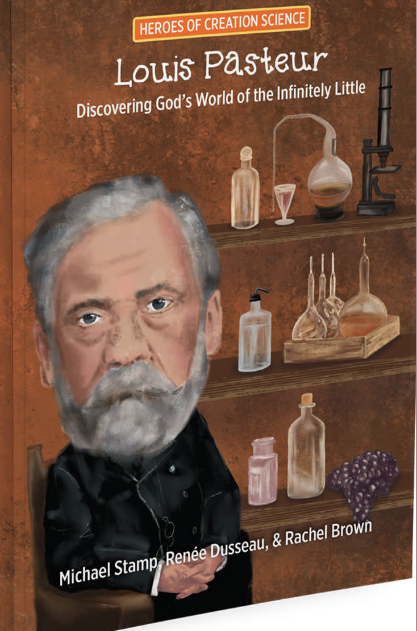Articles » Intermediate
Have you ever seen a plant growing inside a cage? We saw such a sight at the Royal Botanic Gardens in Sydney, Australia. It makes you stop and think doesn’t it? Is the cage there to protect the tree or to protect the people? Is this some sort of carnivorous threat or what? The little evergreen tree inside the cage is actually a very non-threatening 50 cm tall. The cage is there to prevent anyone from running off with the rarest known tree species on earth. The existence of this highly unusual tree, known as the Wollemi Pine, was just discovered in late 1994. Scientists are still dancing with delight. Read the rest of this entry »
Have you ever read The Enormous Crocodile by Roald Dahl? It is such a fun story! Even grown ups laugh about this nasty scheming reptile who keeps devising new and ingenious ways to catch children for his supper. He describes his schemes as “secret plans and clever tricks.” Various jungle animals however foil each sneaky plan and the nasty croc eventually gets launched by an elephant into outer space. Read the rest of this entry »
The study of science really was a lot less complicated a generation or so ago. What we knew about the planets in our solar system, for example, was short and sweet. The planets basically had location, size and mass, rings or no rings, moons and names. That wasn’t too hard to learn. Since the advent of the space age however we have discovered a wealth of exciting new information. Every planet is different not only in appearance from all the other planets, but also in important physical characteristics. Three planets (Venus, Uranus and Pluto) spin in a backwards (retrograde) direction as do a few moons. In addition the axis of rotation for Uranus is tipped so steeply that it is basically spinning sideways. Moreover four gaseous planets, Jupiter, Saturn, Uranus and Neptune, all exhibit magnetic fields just as Earth does. The orientation of the field however with these giants is exactly opposite to that on earth. A compass on any of the four Jovian planets would point southward. Evidently the solar system is becoming more complicated with the launch of each additional probe. Read the rest of this entry »
A special section in the December 11, 1998 issue of the journal Science was devoted to a celebration of the roundworm Caenorabditis elegans. Although a lengthy name has been conferred on this creature, the organism itself is actually at most about 1 mm long. Of the 20,000 or so known species of roundworm or nematode, most are parasites. This species, however, (generally called by the more catchy title of C. elegans), lives free in the soil. Hardly visible to the naked eye, an individual worm nevertheless appears very large when viewed through an ordinary microscope. Except for cells destined to become eggs or sperm, this animal consists of only 959 cells. The whole creature is quite transparent so that, through the microscope, one can easily view the various cells and organs. Development of an individual is fast too, requiring only three days in a life span of two or three weeks. Such an organism seemed ideal for laboratory studies. Thus in 1963 Cambridge biologist Sydney Brenner began a research program which continues to the present. And what fascinating results have been obtained! Read the rest of this entry »
In his famous 1959 article, Dr. Bernard Kettlewell described his research on the peppered moth as the “consummation and confirmation” (p. 53) of Darwin’s theories. (B. Kettlewell. 1959. Darwin’s Missing Evidence. Scientific American. March pp. 4 8-53) Since then, the peppered moth has become standard fare in biology and genetics texts. Educators really like this example because it is “extremely visual” and thus easily understood and remembered. While all scientists, whether creation model support ers or evolution model supporters, agree that shifts in the proportions of various characteristics do take place in nature, only the evolutionists draw more extensive conclusions from the data. For example, Nelson Canada’s 1993 high school text Biolog y (authored by teachers from Alberta and Newfoundland), suggests that students explain the statement “Evolution and adaptation usually occur by means of small changes” in connection with the case of the peppered moth. (p. 110) Read the rest of this entry »
As a rule, scientists seek answers. They want to answer the “why” questions. Why, for example, are plants green? Why is blood red? These are very simple queries compared to the biggies like why does quantum physics work. Nevertheless, believe it or not , we are as far from answering why chlorophyll is green, and blood cells are red, as we are from explaining quantum mechanics. Two commentators in fact recently termed the reason blood is red a “visual pun of molecular wit.” (Morrison and Morrison. 1998. Scientific American. March p. 106) The explanation for colour in chlorophyll is similarly obscure. The situation becomes even more interesting when we discover that chlorophyll and the heme component of hemoglobin are chemically extremely similar . Read the rest of this entry »
The new generation of creation scientists are young, smart and sophisticated. Along with geneticists, taxonomists, and palaeontologists, experts in DNA sequencing analysis and phylogenetic analysis (the search for relationship patterns) are asking new questions and revisiting old issues. No longer do they concentrate on fighting evolutionary theories. They don’t need to. Rather, they are forging new creation-based theories. With this positive approach, they are certain to attract yet further support from Christians in educational and professional circles. It was to learn more about some new initiatives that I attended a conference in Lynchburg, Virginia on August 5-7, 1999. Read the rest of this entry »
Indeed it was a “tragedy,” opined an editorial in the New York Times (August 13, 1999). Within this context, naturally enough, the editorialist continued “deep sadness is the most sensible response.” The reader might have been pardoned for suspecting the opinion piece was actually written tongue in cheek. The event which called forth this public mourning was none other than a decision by the State of Kansas’ Board of Education. That action of the Board, according to the NY Times, “makes it more likely that many schools will spend less time on evolution …” Oh really? One might have understood if the newspaper had called the action regrettable or ill-advised, but “tragic?” What was going on here? Read the rest of this entry »
Mankind has always been fascinated by the night sky. Indeed it seems that some of the earliest recorded observations from nature were astronomical. For example, in the mid nineteenth century, English archaeologists uncovered a huge library of clay tablets in the palace of Assyrian Emperor Sennecherib of Nineveh, who lived about seven hundred years B.C. Among other clay tablets were detailed records concerning the planet Venus. It’s interesting that the pattern of appearances and absences from the sky is different from what we see today. It’s hard to say if the observations were accurate, but we do know that many of these ancients took their studies very seriously. The wise men in the gospels are a good example. Moreover an earlier document, the book of Job, mentions constellations such as the Pleiades. Read the rest of this entry »
As a teenager I was active in the Boy Scouts, and in lower levels of school I had an interest in science and math. I was a radioman in the US Navy during the Second World War, and in college I majored in zoology with very strong concentrations in Bible and chemistry. Read the rest of this entry »
Have you ever imagined yourself as a best selling author? Detective stories sell well. Let’s give it a try. My story is set in an imposing country home in England. The wealthy owner happens to wander into his wife’s dressing room. She is away on an expedition to the beach. The gentleman notices his wife’s diamond necklace carelessly flung onto the table amidst expensive perfume bottles. Horrified, he swoops down upon the jewelry, only to discover that this is a cheap imitation of the real necklace. Promptly he calls the local inspector who sends out four detectives. The detectives snoop around and each presents his theory on the case. Detective Smith declares that the butler stole the necklace and sold it in London. Detective Jones strongly suggests that his evidence implicates the maid. Detective Cooper accuses the daughter’s boyfriend of helping himself to the jewels. Detective Trent indicates that the evidence points to the son of the family who has wasted huge sums of money on fast cars. The gentleman is now thoroughly confused. When his wife returns home, he shares all these distressing details with her. It is then that his wife informs him that actually she lent the real necklace to her sister, Lady Hampton, who is scheduled to attend a royal court event that very evening. Read the rest of this entry »
Have you ever wished that you could rewrite an event in your life? It happens to all of us once in a while, of course. However the results are a little worse when something has been published. It’s harder to imagine that the event never happened. Thus it was in 1999 that some palaeontologists positioned themselves far out on a limb (metaphorically speaking), and in early 2000 somebody cut the branch off. Oooops…… Read the rest of this entry »
An old song runs over and over through my head: “We’re off to Alaska, land of the midnight sun!” Indeed this attractive feature of the far north attracts scores of tourists. However like many situations, this one involves good news and bad news. The good news is the endless summer days. The bad news, of course, is the endless winter nights. All living creatures thrive in the north during the summer. Plants grow quickly and animals rise their young. The winter however is not only dark, but also very cold. How, one wonders, would organisms fare there if the climate were still dark, but not cold? That’s an interesting question because there is scientific evidence for such a situation in the past. Some of the evidence is Canadian and some is American. Read the rest of this entry »
On Tuesday, June 27, 2000 the National Post published a two page spread. At first glance, it did not look that exciting. The text on these pages consisted only of four letters, C, G, A and T, arranged in seemingly random order. The final line, for example, begins
- CATGGTGTCATACTGCTCTTTATTTTATT… Read the rest of this entry »
A tiny news item caught my eye: “Creature liberated from oilsands” (Edmonton Journal November 4, 2000 G1). Apparently a rare marine fossil was found earlier this year near Fort McMurray. The oilsands are making quite a name for themselves as a source of fossils. Besides unfossilized remains of trees, excavators have turned up nine marine reptiles, mostly plesiosaurs, from the oilsands. One of the earlier specimens, like the recent find, was identified as an ichthyosaur. Read the rest of this entry »






